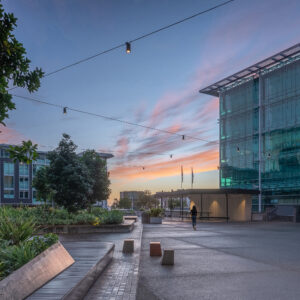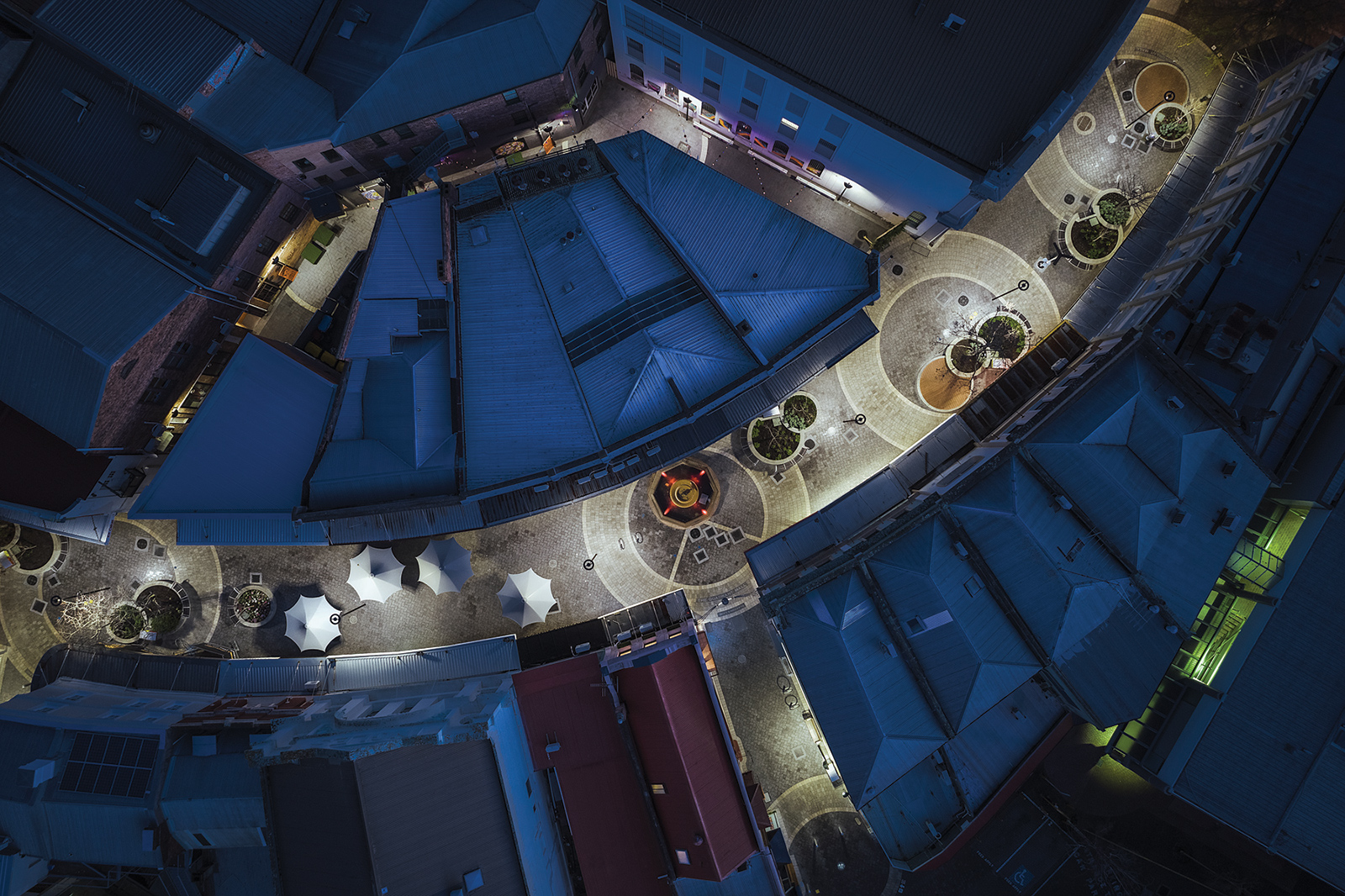
PEDESTRIAN, STREET & AREA LUMINAIRES
Quadrant Mall
Quadrant Mall, Launceston, TAS
- ClientCity Of Launceston
- Lighting DesignEngineering Solutions Tasmania
- Sales PartnerSouthern Lighting and Distribution
- PhotographerJackie Chan
Launceston’s visionary lighting of Quadrant Mall. A public lighting project in Tasmania can lay claim to being one of the first in the world to utilise the CFT540 luminaire, a breakthrough street and area luminaire from WE-EF that features a unique circular design. The seven pole-top luminaires in Quadrant Mall in Launceston’s city centre give the area a completely new and contemporary look.
“Quadrant Mall was the first official subproject as part of the City Heart project for the revitalization of Launceston’s CBD,” according to Daniel Mace, Project Engineer at the City of Launceston. “This included the replacement of underground services, pavements, landscaping and lighting,” he said. Based on a design by Engineering Solutions, the new luminaires for the mall and adjoining laneway were supplied by Southern Lighting & Distribution, the WE-EF sales partner in Tasmania. Southern Lighting and Distribution Director Stuart Hamilton explained that “this was the first time that Launceston City Council had used the CFT luminaire. The CFT540 and the WE-EF One-LEDConcept (OLC) lenses minimized the quantity of luminaires and poles used, which helped reduce costs.”
OLC combines the multi-layer lighting approach with modular PCB/LED/lens engineering, thereby balancing the need for safety with visual comfort and energy savings.
According to Paul Smart, Technical Resources Manager at WE-EF, “the quality of light is achieved by the lens arrangement. We have developed a lens that doesn’t produce a lot of glare, so the main beam of light isn’t pointing in your face – the comfort level for the eye is better”. He said the primary reason that the design specified the CFT540 luminaire for the mall and RMC320 luminaire for the laneway was aesthetics. “The geometry of the luminaires worked well with the architectural concept,” he explained.
Mr. Mace said that “since this was a redevelopment of public urban space, the aesthetics were important, while the other consideration was the use of leading technology. LED was a must and the ability to dim the lighting to 50% for energy saving was definitely a factor very attractive to Council.” Both types of luminaires were controlled by a motion sensor, which presented some challenges in the case of the RMC. “We ran development exercises and selected the sensors, and between ourselves and our colleagues overseas, we determined where we could place the sensor inside the luminaire. A custommade aperture was then made,” Mr. Smart explained. “It took about three months to come up with this solution, including the creation of prototypes and samples.”
Quadrant Mall is a thoroughfare with restaurants, pubs and clubs and has high pedestrian use especially on Friday nights and weekends. However, the ability to dim lights was also required in order to satisfy the needs of surrounding residents. “It was a challenge to provide high levels of lighting as a function for pedestrians while also being mindful of not disturbing residents,” Mr. Mace pointed out.
Mr. Smart explained that each luminaire had an inbuilt motion sensor, “so that when someone enters the area the light level increases from 50 per cent to 100 per cent”. This process takes around two seconds and ensures that the lighting is operating at 100 per cent by the time the person approaches, maintaining that level for several minutes. Operating the lighting in this way contributes to immediate energy and costs savings. Each luminaire, when in the dim state, uses between 45-50 per cent of energy compared with full capacity.
“The light level in the WE-EF luminaire is constant. It only loses about 10 per cent of light for the life of the product,” Mr. Smart said. “We made our calculations based on a 15 to 20-year lifetime, which is around 80,000 hours of operation. However, dimming the lighting levels will prolong the life of the luminaires even further.”
In addition to providing significant energy savings, the new luminaires in Quadrant Mall will require virtually no maintenance compared to the old 100- watt metal halide luminaires.
The lighting scheme for Quadrant Mall and the adjoining laneway is just part of a bigger overhaul and investment on behalf of the council in the liveability of the city and the safety of its visitors and residents. “The Mall has had a significant upgrade, not just in lighting and the quality of light; the look of the fittings as well as the decreased clutter due to the limited quantity of poles and luminaires offered by the lighting concept have matched the high quality of the renovation,” Mr. Hamilton noted.
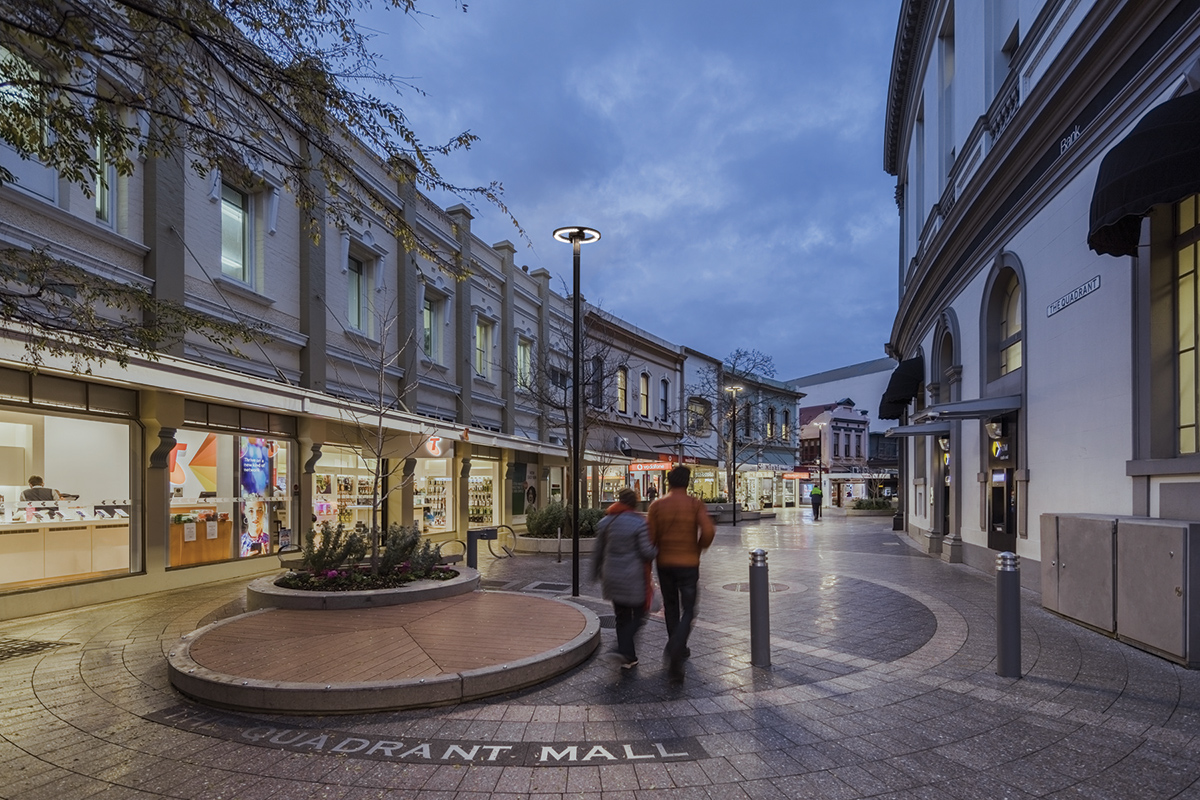
A public lighting project in Tasmania can lay claim as one of the first in the world to utilise the CFT luminaire, a breakthrough street and area luminaire from WE-EF that features a unique circular design.
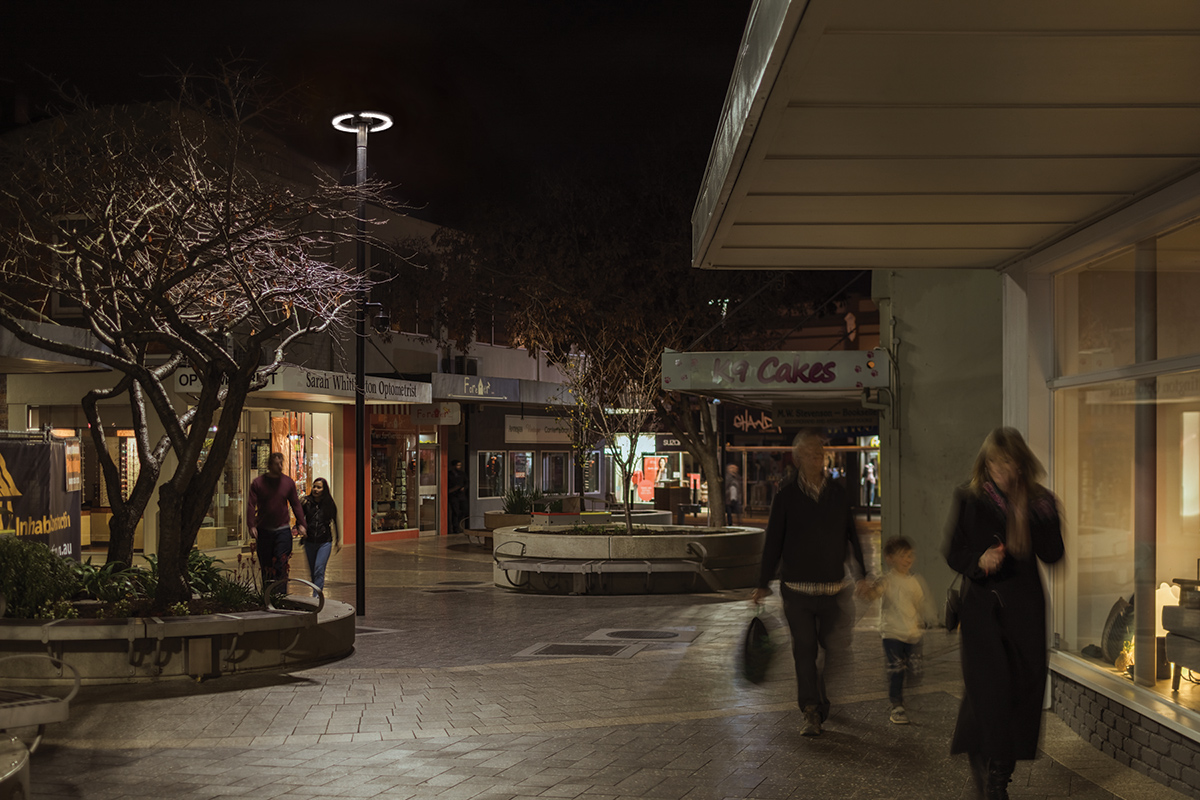
The CFT540 and the WE-EF OLC lenses helped minimise the quantity of luminaires and poles used which reduced costs.

Quadrant Mall is a thoroughfare for restaurants, pubs and clubs, and has high pedestrian use especially on peak nights such as Friday nights and weekends. However, the ability to dim lights was also required to satisfy the needs of surrounding residents.
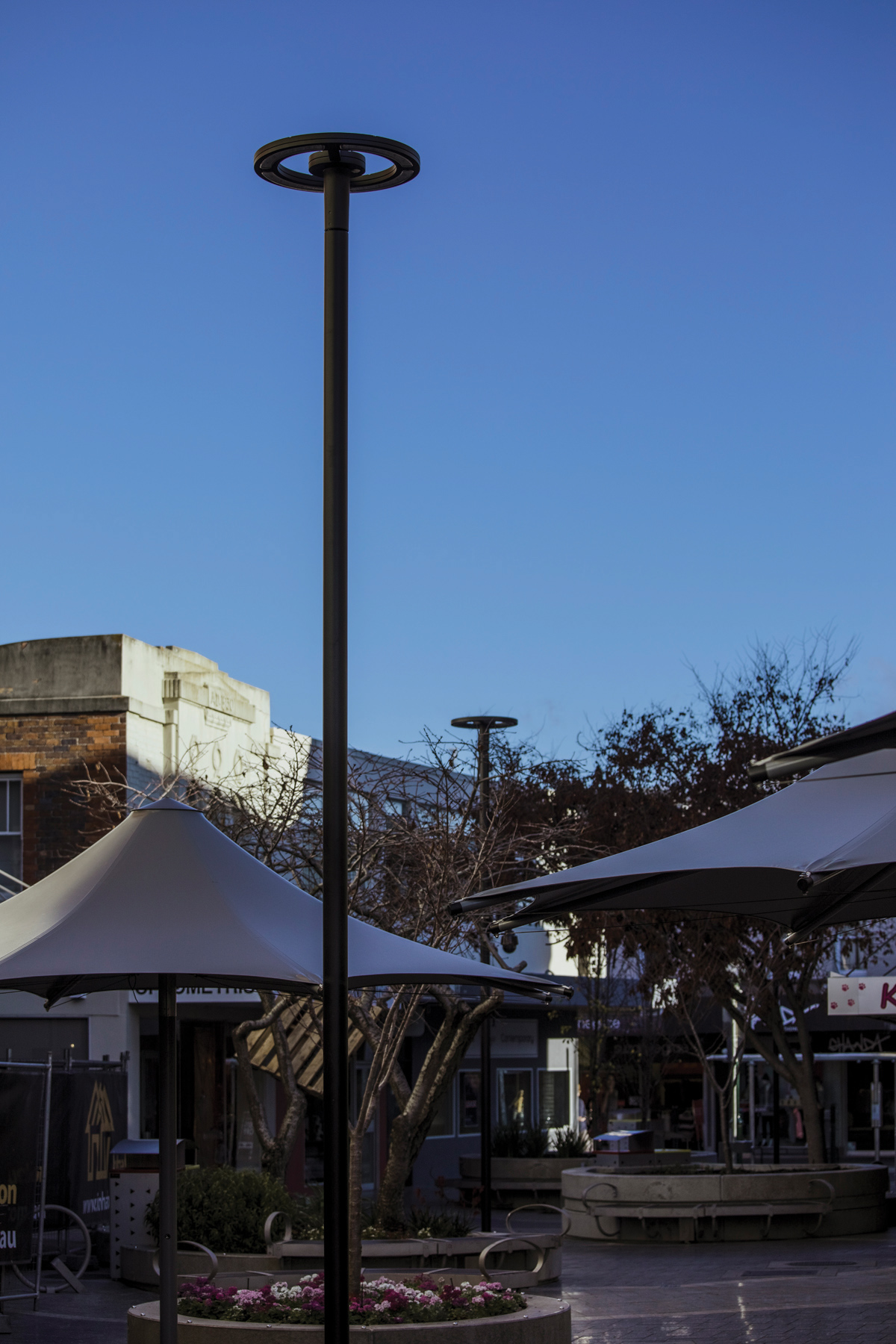
The geometry of the fittings worked well with the architectural concept.
